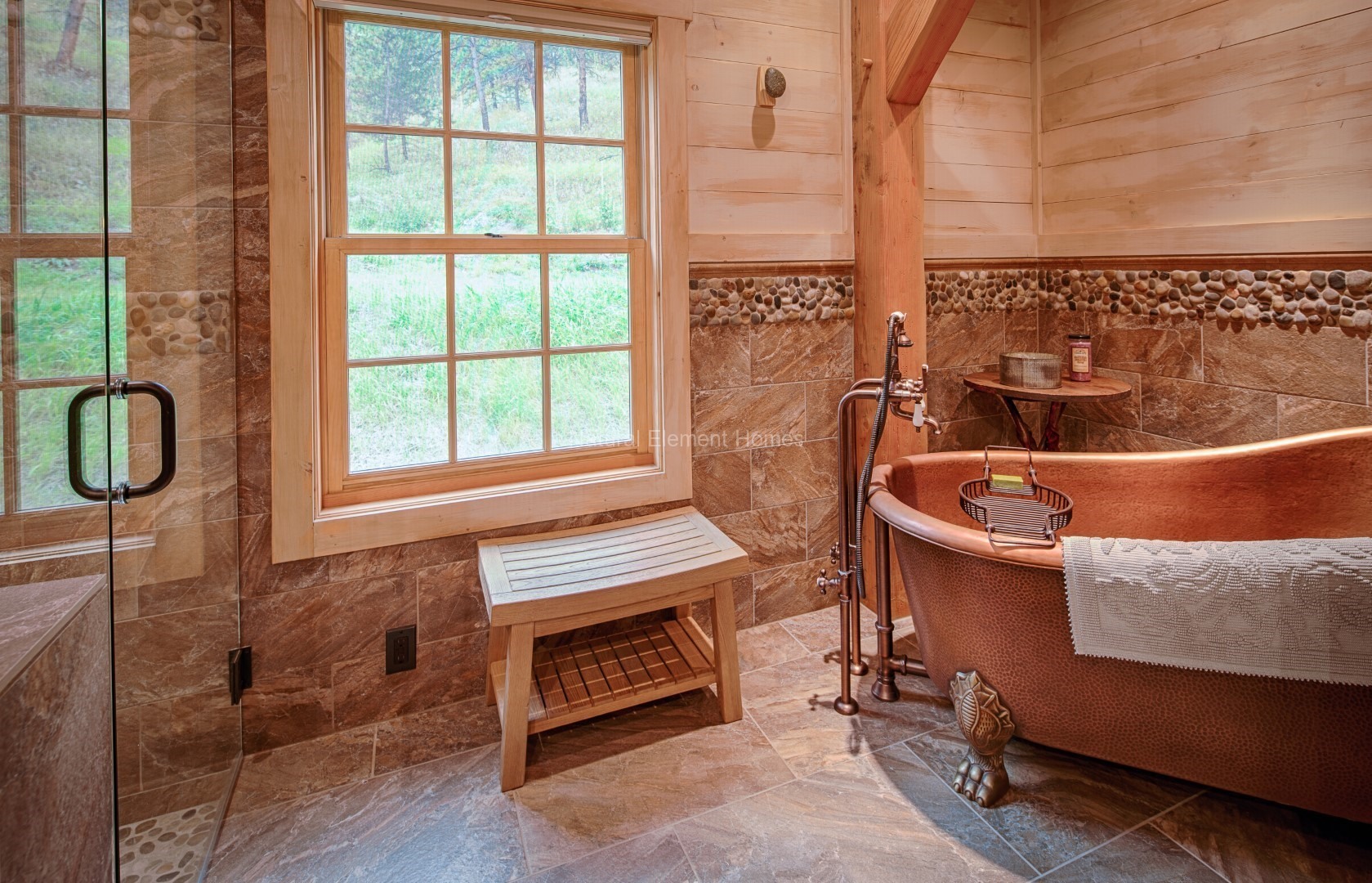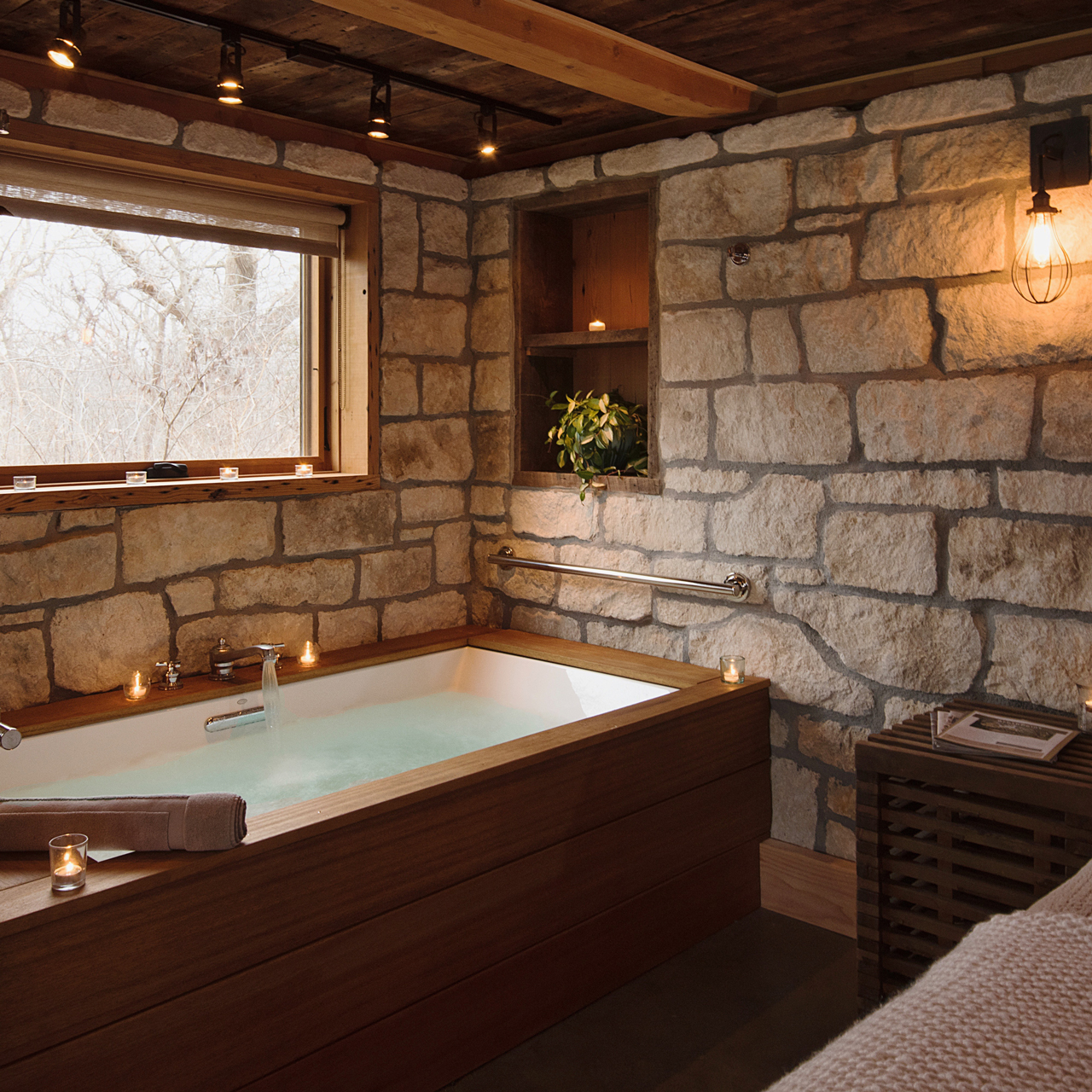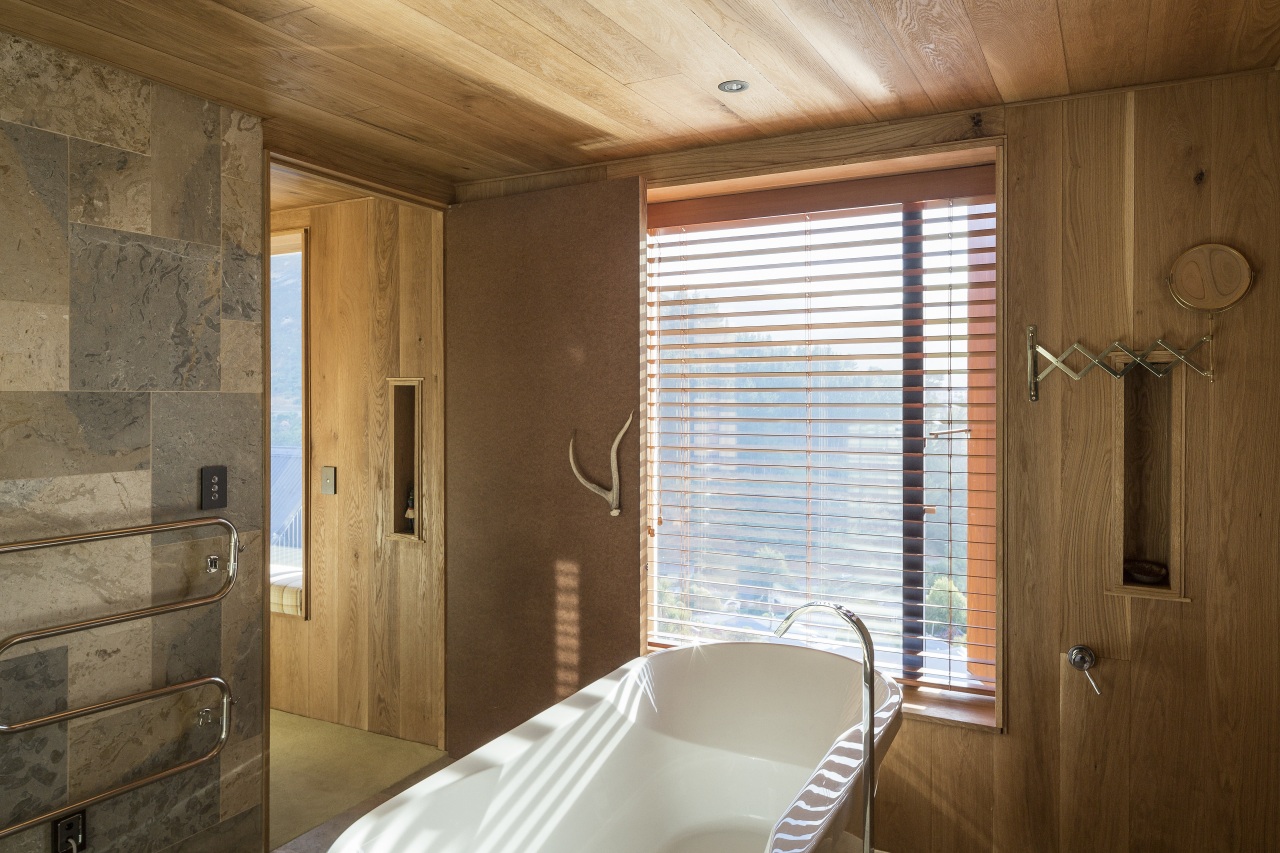Design and Aesthetics

Timber walls in bathrooms – Timber walls can bring a touch of warmth and elegance to bathrooms, creating a spa-like atmosphere that is both inviting and visually appealing.
The warm, natural tones of timber walls in bathrooms create a cozy and inviting atmosphere, especially when paired with festive touches like christmas tree stickers. These charming accents add a touch of holiday cheer without overwhelming the space, complementing the organic textures of the timber walls.
As the soft glow of fairy lights illuminates the stickers, the bathroom transforms into a winter wonderland, inviting relaxation and rejuvenation amidst the warm embrace of nature.
The natural beauty of timber adds a sense of organic charm to the space, while its warm tones create a cozy and inviting ambiance. Timber walls can also help to define the space and create a focal point, making the bathroom feel more luxurious and well-appointed.
Types of Timber Finishes
There are a variety of timber finishes available, each with its own unique look and feel. Some of the most popular finishes for bathroom walls include:
- Natural: This finish leaves the timber in its natural state, showcasing its unique grain and texture.
- Stained: Stained timber walls can add a touch of color to the bathroom, while still maintaining the natural beauty of the wood.
- Painted: Painted timber walls can create a more modern look, and can be matched to any color scheme.
The type of finish you choose will depend on the overall style of your bathroom and your personal preferences.
Creating a Warm and Inviting Atmosphere
Timber walls can help to create a warm and inviting atmosphere in bathrooms by adding a touch of natural beauty to the space. The warm tones of timber can help to create a sense of coziness and relaxation, making the bathroom a more inviting place to spend time.
In addition to their aesthetic appeal, timber walls can also help to improve the acoustics of the bathroom, making it a more peaceful and relaxing space.
Timber walls in bathrooms are a stylish and practical choice, providing a warm and inviting atmosphere while resisting moisture and humidity. While timber walls offer durability and aesthetic appeal, their hidden potential can sometimes lead to unexpected discoveries, as exemplified by the intriguing case of a couple who stumbled upon a hidden bathroom behind a timber wall.
This discovery serves as a reminder that even the most familiar spaces can hold unexpected surprises, and that timber walls in bathrooms may not only enhance the ambiance but also conceal secret passages to hidden rooms.
Functionality and Durability

Timber walls in bathrooms offer several practical advantages. Their inherent moisture resistance makes them suitable for humid environments, preventing warping or rotting. Additionally, timber is a durable material that can withstand regular use and exposure to water.
Treatment and Maintenance, Timber walls in bathrooms
To enhance their longevity, timber walls in bathrooms can be treated with sealants, coatings, or finishes. These treatments create a protective barrier against moisture, preventing water penetration and ensuring the timber’s integrity. Regular cleaning with mild detergents and occasional reapplication of protective treatments are essential to maintain the appearance and durability of timber walls.
Cost and Installation: Timber Walls In Bathrooms

The cost of timber walls in bathrooms varies depending on the type of timber used, the size of the bathroom, and the complexity of the installation. Generally, timber walls are more expensive than other types of bathroom wall materials, such as drywall or tile.
The factors that influence the cost of timber wall installation include:
- The type of timber used: Some types of timber, such as cedar and mahogany, are more expensive than others, such as pine and fir.
- The size of the bathroom: A larger bathroom will require more timber and labor to install, which will increase the cost.
- The complexity of the installation: A more complex installation, such as one that involves cutting and fitting around fixtures, will take more time and labor, which will also increase the cost.
Step-by-Step Guide to Installing Timber Walls in Bathrooms
Installing timber walls in bathrooms is a relatively simple process, but it is important to follow the steps carefully to ensure a professional-looking finish.
- Prepare the walls: Remove any existing wall coverings and ensure that the walls are clean and dry.
- Install the framing: The framing is the structure that will support the timber walls. It is typically made of 2x4s or 2x6s, and it should be installed according to the manufacturer’s instructions.
- Install the timber walls: The timber walls can be installed horizontally or vertically. If you are installing them horizontally, start at the bottom of the wall and work your way up. If you are installing them vertically, start at one end of the wall and work your way to the other.
- Secure the timber walls: Once the timber walls are installed, they should be secured to the framing using nails or screws.
- Finish the walls: The timber walls can be finished with a variety of materials, such as paint, stain, or tile.
Here are some special considerations for installing timber walls in bathrooms:
- Use treated timber: The timber used in bathrooms should be treated to resist moisture and rot.
- Install a vapor barrier: A vapor barrier should be installed behind the timber walls to prevent moisture from penetrating the walls.
- Ventilate the bathroom: A well-ventilated bathroom will help to prevent moisture from building up and damaging the timber walls.